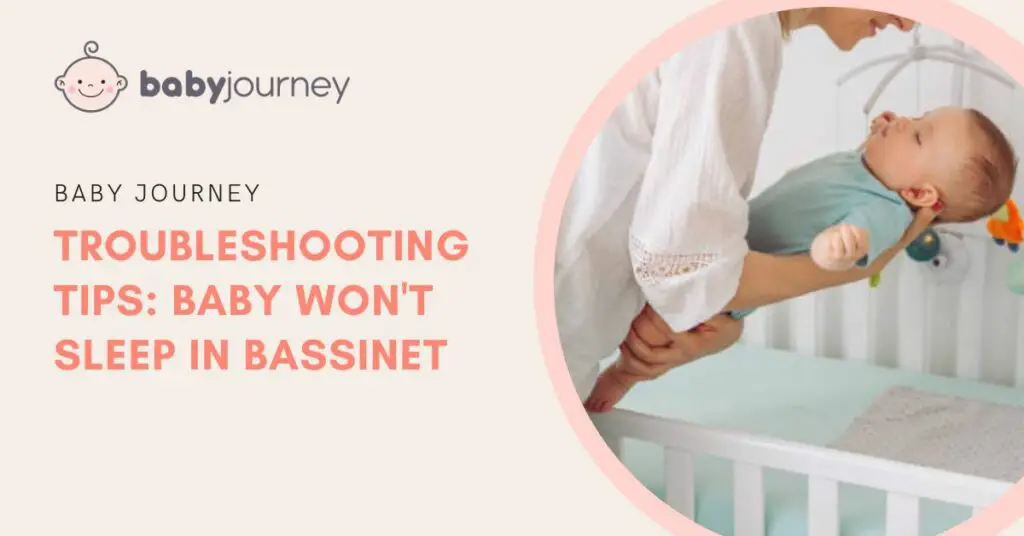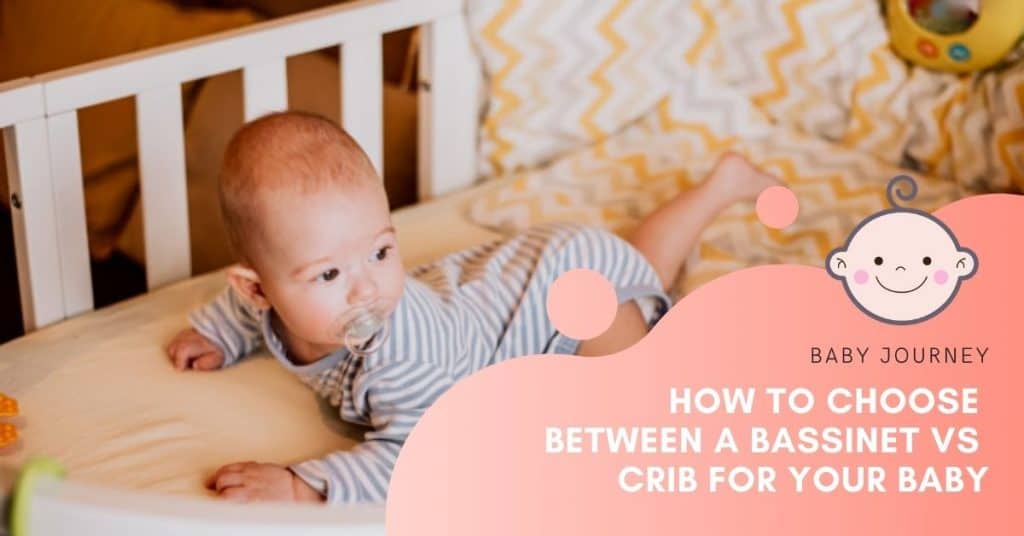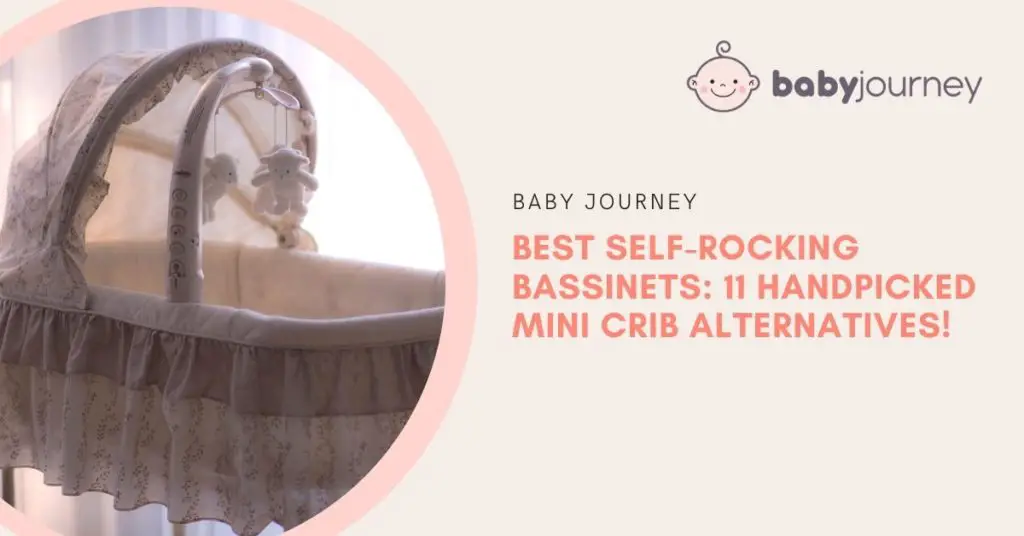When a baby won’t sleep in the bassinet, it can be a frustrating and exhausting experience for new parents. While some babies take to sleeping in their bassinet without issue, others may struggle to fall asleep or stay asleep in this new environment. There are a variety of reasons why a baby may resist sleeping in their bassinet, and it’s important for parents to identify the underlying cause in order to find a solution.
One common reason why a baby may not want to sleep in their bassinet is hunger. Babies have small stomachs that empty quickly, so if they’re hungry, they may wake up frequently or refuse to sleep in their bassinet altogether. Another reason could be discomfort caused by a dirty diaper or a room that’s too bright or noisy. Additionally, some babies may simply prefer to be held or rocked to sleep, rather than sleeping alone in a bassinet.
If you’re struggling with a baby who won’t sleep in their bassinet, it’s important to remember that this is a common issue that many new parents face. By identifying the underlying cause and trying different strategies, you can help your baby feel more comfortable and settled in their bassinet, which can lead to better sleep for both you and your little one.
- Understanding Baby Sleep Patterns
- Creating a Safe Sleep Environment
- Implementing a Bedtime Routine
- Addressing Common Sleep Challenges
- Importance of Sleep Training
- Choosing the Right Sleep Aids
- Feeding and Sleep
- Conclusion
- Frequently Asked Questions
- How to get baby to sleep in bassinet without swaddle?
- How to get newborn to sleep without being held?
- How to get baby to sleep in bassinet after co-sleeping?
- What to do if your baby won't sleep in bassinet?
- Why does my baby wake up when I put him in the bassinet?
- How do I get my 2 month old to sleep in his bassinet at night?
Understanding Baby Sleep Patterns
Understanding baby sleep patterns is essential for parents who want to help their little ones sleep better. Newborns sleep a lot, but they do not sleep for long periods at a time. They wake up frequently to feed, and this is perfectly normal.
Newborn sleep habits are different from those of adults. Babies have shorter sleep cycles that last around 50-60 minutes. They spend more time in the REM (Rapid Eye Movement) phase of sleep, which is essential for brain development. This is why newborns tend to wake up easily and frequently.
As babies grow, their sleep patterns change. They start sleeping for longer periods at night and taking fewer naps during the day. However, every baby is different, and their sleep schedules may vary. Some babies may sleep for longer periods at night, while others may wake up frequently.
It is important to understand the concept of wake windows when it comes to baby sleep. Wake windows refer to the amount of time a baby can stay awake before they get tired and need to sleep again. Newborns have short wake windows, and they need to nap frequently during the day. As babies grow, their wake windows become longer, and they can stay awake for longer periods.
Parents may experience sleepless nights when their baby won’t sleep in the bassinet. There could be several reasons for this, such as hunger, discomfort, or a dirty diaper. It is important to check for these issues before assuming that the baby is not sleepy.
In summary, understanding baby sleep patterns is crucial for parents who want to help their babies sleep better. Newborns have different sleep habits than adults, and their sleep patterns change as they grow. Parents should keep in mind the concept of wake windows and check for any issues that may be keeping their baby awake.
Creating a Safe Sleep Environment
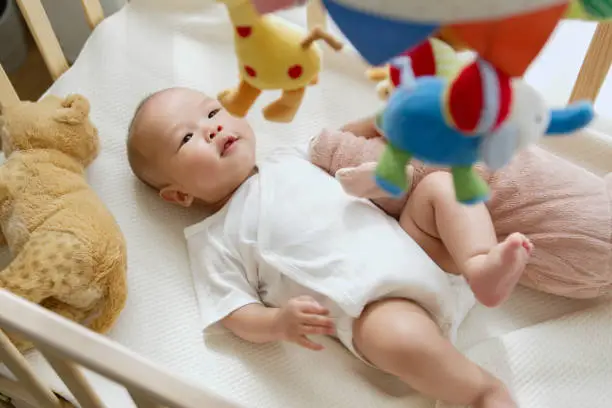
When it comes to creating a safe sleep environment for a baby, there are a few key factors to consider. First and foremost, it’s important to ensure that the sleeping surface is safe and appropriate for the baby’s age and size. This could mean using a bassinet for a newborn or a crib for an older baby.
Regardless of the sleeping surface, it’s important to make sure that the mattress is firm and fits snugly in the frame of the bassinet or crib. Soft bedding, including pillows, blankets, and bumpers, should be avoided as they can increase the risk of suffocation and Sudden Infant Death Syndrome (SIDS). Instead, dress the baby in a sleep sack or swaddle to keep them warm and cozy.
In addition to the sleeping surface, the sleep environment itself should be considered. The ideal room temperature for a baby’s sleep environment is between 68-72°F (20-22°C), and the room should be kept dark and quiet to promote restful sleep.
It’s also important to ensure that the baby is placed flat on their back to sleep, as this position has been shown to reduce the risk of SIDS. If the baby has reflux or other medical issues that require them to sleep at an incline, it’s important to speak with a healthcare provider about safe sleep options.
When it comes to sheets and other bedding, it’s important to choose options that are specifically designed for use with babies. These should fit snugly on the mattress and be free from any loose threads or other potential hazards.
Overall, creating a safe sleep environment for a baby is all about being mindful of the potential risks and taking steps to minimize them. By following these guidelines, parents can help ensure that their baby gets the restful, safe sleep they need to thrive.
Implementing a Bedtime Routine

Create a regular bedtime routine as it is one of the best ways to aid a baby in falling asleep in a bassinet. A bedtime ritual might assist in informing the infant that it is time to relax and get ready for sleep.
Warm bath, gentle massage, tale or lullaby, and then putting the infant in the bassinet when they are still sleepy yet aware could be part of a usual bedtime routine. By doing so, the infant may come to link the bassinet with sleep.
Swaddling can also be a helpful part of a bedtime routine. Swaddling can provide a sense of security for the baby and help reduce the startle reflex that can often wake them up. It’s important to make sure the swaddle is snug but not too tight, and that the baby’s hips are able to move freely.
Some parents find that using a white noise machine or other sound machine can also be helpful in establishing a bedtime routine. White noise can help drown out other noises that might wake the baby up, and can provide a consistent and soothing background sound that can help the baby relax.
Temperature can also play a role in a baby’s ability to sleep. It’s important to make sure the baby’s room is not too hot or too cold, and that they are dressed appropriately for the temperature. A good rule of thumb is to dress the baby in one more layer than you would wear to be comfortable in the same room.
Finally, some babies may find comfort in using a pacifier to help them fall asleep. If you choose to use a pacifier, it’s important to make sure it is clean and in good condition, and to avoid using it as a substitute for feeding.
By implementing a consistent bedtime routine that includes swaddling, white noise, appropriate temperature, and potentially a pacifier, parents can help increase the likelihood that their baby will sleep in a bassinet.
Addressing Common Sleep Challenges
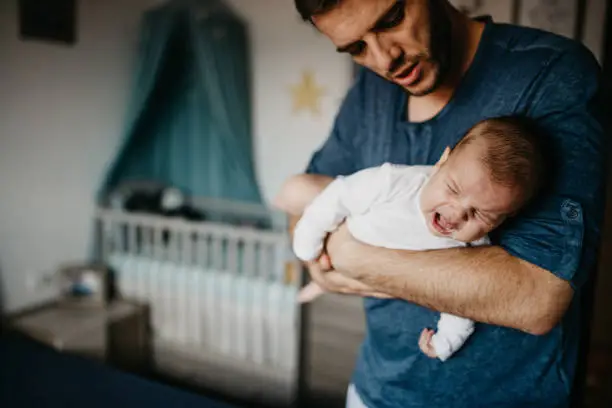
It is common for babies to have difficulty sleeping in their bassinets. There could be a variety of causes at play, and it can be challenging for parents to pinpoint the exact reason. This section will address some of the most common sleep challenges that parents may encounter and provide some possible solutions.
Reflux and Acid Reflux
Reflux and acid reflux can cause discomfort for babies, making it difficult for them to sleep. If a baby is experiencing reflux, it is essential to elevate the head of the bassinet slightly to help alleviate the symptoms. Additionally, feeding the baby smaller, more frequent meals can help reduce the amount of stomach acid produced.
Overtiredness
An overtired baby can be challenging to put to sleep. It is important to establish a consistent sleep routine and ensure that the baby is getting enough naps throughout the day. Putting the baby to bed at the same time every night can also help establish a regular sleep pattern.
Fussy Baby
A fussy baby can make it challenging to put them to sleep. It is essential to identify the cause of the fussiness and address it before putting the baby to bed. Some possible causes of fussiness include hunger, a dirty diaper, or being too hot or too cold. Addressing these issues can help soothe the baby and make it easier to put them to sleep.
Startle Reflex
The startle reflex, also known as the Moro reflex, can cause babies to wake up suddenly and have difficulty going back to sleep. Swaddling the baby can help prevent the startle reflex from waking them up. It is important to ensure that the swaddle is not too tight and that the baby can move their hips freely.
Sleep Regression
Sleep regression can occur when a baby reaches a developmental milestone and can cause them to have difficulty sleeping. It is essential to establish a consistent sleep routine and ensure that the baby is getting enough naps throughout the day. Consistency is key during sleep regression, and it may take a few weeks for the baby to adjust to the new routine.
Dirty Diaper
A dirty diaper can cause discomfort for babies and make it challenging for them to sleep. It is important to check the baby’s diaper before putting them to bed and change it if needed.
Daylight
Daylight can interfere with a baby’s sleep, making it essential to create a dark environment in the baby’s room. Using blackout curtains or blinds can help block out the light and create a more conducive sleep environment.
In summary, there are several common sleep challenges that parents may encounter when trying to get their baby to sleep in a bassinet. Identifying the cause of the problem and addressing it can help soothe the baby and make it easier for them to sleep.
Importance of Sleep Training
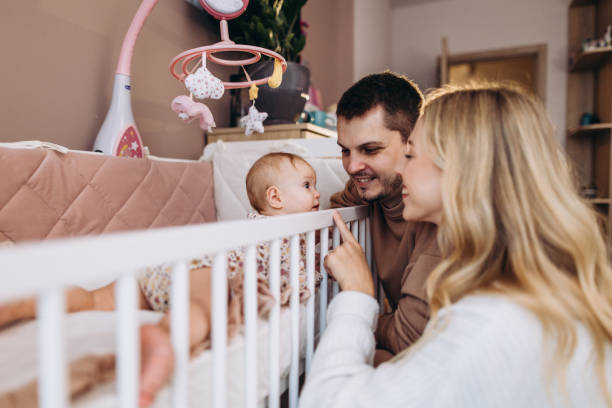
Sleep training is an essential aspect of ensuring that a baby sleeps well in a bassinet. It involves teaching a baby how to fall asleep and stay asleep on their own. Sleep training is crucial because it helps a baby develop healthy sleep habits that they will carry with them for the rest of their lives.
Babies who are not sleep trained tend to rely on external factors such as movement or being held by their parents to fall asleep. This habit can be detrimental to the baby’s sleep patterns, as they may wake up frequently during the night and have trouble falling back asleep without the same external factors.
Sleep training helps a baby learn to fall asleep on their own, without the need for external factors such as movement or being held. This habit helps the baby develop a healthy sleep pattern and promotes better sleep quality.
Parents may find sleep training challenging, but it is essential to remain consistent and patient throughout the process. It is crucial to establish a consistent bedtime routine, such as a warm bath, a story, and a lullaby. Consistency is key in helping the baby develop healthy sleep habits.
In conclusion, sleep training is a crucial aspect of ensuring that a baby sleeps well in a bassinet. It helps the baby develop healthy sleep habits and promotes better sleep quality. Parents should remain consistent and patient throughout the process to help their baby develop healthy sleep habits that will last a lifetime.
Choosing the Right Sleep Aids

When a newborn baby won’t sleep in a bassinet, parents often turn to sleep aids to help their baby feel more comfortable and secure. However, choosing the right sleep aids can be overwhelming for new parents. Here are some tips on how to choose the right sleep aids for your baby:
Swaddle Blankets
Swaddling is a method that involves tightly encircling a newborn in a blanket to provide security and calmness. Swaddle blankets come in different materials and sizes, so it’s important to choose one that is appropriate for your baby’s age and size. Some swaddle blankets have Velcro or snaps to make it easier to wrap your baby.
Sleep Sacks
Sleep sacks are wearable blankets that keep your baby warm and secure without the need for loose blankets that can be a suffocation hazard. They come in different materials and sizes, and some even have a swaddle-like design to keep your baby’s arms snug.
Sleep Positioners
Sleep positioners are designed to keep your baby in a specific position while they sleep. However, the American Academy of Pediatrics (AAP) does not recommend using sleep positioners as they can be a suffocation hazard.
Newborn Baby Sleep Aids
When choosing sleep aids for a newborn baby, it’s important to choose products that are specifically designed for their age and size. Always follow the manufacturer’s instructions and safety guidelines.
In summary, choosing the right sleep aids for a baby can be overwhelming for new parents. Swaddle blankets and sleep sacks are popular choices, but it’s important to choose the right size and material. Sleep positioners are not recommended by the AAP. For newborn babies, it’s important to choose products that are specifically designed for their age and size and to always follow safety guidelines.
Feeding and Sleep
The most frequent cause of a baby not falling asleep in a bassinet is hunger. Babies’ stomachs are small, therefore they require frequent feedings, particularly in the first few months of life. Breastfeeding is a great way to ensure that your baby gets the nutrition they need, and it can also help them feel comforted and relaxed, which may make it easier for them to fall asleep.
If you are breastfeeding, it’s important to make sure that your baby is latching on correctly and getting enough milk. A lactation consultant can be a great resource if you’re having trouble with breastfeeding. It’s also important to feed your baby on demand, rather than on a strict schedule. This means that you should feed your baby whenever they show signs of hunger, such as rooting, sucking on their hands, or crying.
Gas can also be a factor that affects sleep. Babies can be gassy for a variety of reasons, including swallowing air while feeding or crying, or from certain foods in their mother’s diet if they are breastfeeding. If you suspect that gas is causing your baby’s sleep issues, there are a few things you can try:
- Burp your baby frequently during and after feedings.
- Try different feeding positions, such as holding your baby upright or laying them on their side.
- If you are breastfeeding, try eliminating certain foods from your diet that may be causing gas in your baby, such as dairy or cruciferous vegetables.
It’s important to remember that every baby is different, and what works for one may not work for another. If you’re having trouble getting your baby to sleep in their bassinet, it’s a good idea to consult with your pediatrician or a sleep specialist. They can help you identify any underlying issues and develop a plan to help your baby sleep better.
Conclusion
In conclusion, there are several reasons why a baby may not sleep in a bassinet, including hunger, discomfort, overstimulation, and being used to sleeping in their parent’s arms. It is important to address these issues to ensure that the baby is getting the rest they need for healthy development.
Parents can try several strategies to encourage their baby to sleep in a bassinet, including establishing a consistent bedtime routine, using white noise or a pacifier, and ensuring that the bassinet is a safe and comfortable sleeping environment. It is also important to pay attention to the baby’s cues and respond to their needs promptly.
If a baby continues to have difficulty sleeping in a bassinet, it may be helpful to consult with a pediatrician or a sleep specialist. They can provide additional guidance and support to help parents establish healthy sleep habits for their baby.
Overall, with patience and persistence, most babies can learn to sleep in a bassinet and establish healthy sleep habits that will benefit them throughout their childhood and beyond.
Frequently Asked Questions
How to get baby to sleep in bassinet without swaddle?
Swaddling can help calm a fussy baby and make them feel secure, but some babies don’t like being swaddled. If your baby won’t sleep in a bassinet without being swaddled, try using a sleep sack instead. These are designed to keep your baby warm and snug without restricting their movement. You can also try using a pacifier, white noise machine, or gentle rocking to soothe your baby to sleep.
How to get newborn to sleep without being held?
Newborns often like to be held because it makes them feel safe and secure. However, it’s important to teach your baby to sleep on their own in a safe sleep environment. To get your newborn to sleep without being held, try swaddling them, using a pacifier, or placing them in a bassinet next to your bed. You can also try a gentle rocking motion or white noise to help soothe your baby to sleep.
How to get baby to sleep in bassinet after co-sleeping?
If your baby is used to co-sleeping and won’t sleep in a bassinet, it can be a difficult transition. To help your baby adjust to sleeping in a bassinet, start by placing the bassinet next to your bed. You can also try using a sleep shirt or blanket that smells like you to help your baby feel more comfortable. Gradually move the bassinet further away from your bed until your baby is sleeping in their own room.
What to do if your baby won’t sleep in bassinet?
If your baby won’t sleep in a bassinet, there are several things you can try. First, make sure the bassinet is a safe sleep environment and that your baby is comfortable. You can also try using a pacifier, white noise machine, or gentle rocking to soothe your baby to sleep. If your baby is still struggling to sleep in a bassinet, talk to your pediatrician for additional advice.
Why does my baby wake up when I put him in the bassinet?
Babies are used to sleeping in a warm, cozy environment, so it can be difficult for them to adjust to a cooler, less restrictive sleep space like a bassinet. Additionally, babies have shorter sleep cycles than adults, so they may wake up more frequently throughout the night. To help your baby stay asleep in a bassinet, try using a sleep sack, swaddling, or white noise to help them feel more secure.
How do I get my 2 month old to sleep in his bassinet at night?
At 2 months old, your baby may still be adjusting to a regular sleep schedule. To help your baby sleep in their bassinet at night, establish a consistent bedtime routine and stick to it. This may include a bath, reading a story, and singing a lullaby. Make sure the bassinet is a safe sleep environment and that your baby is comfortable. You can also try using a pacifier, white noise, or gentle rocking to soothe your baby to sleep.


